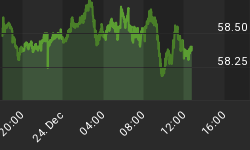Nothing gets oilmen more excited than the idea of building pipelines from exotic, hard to reach places to seaports where the product of their endeavors can be shipped to lucrative foreign markets.
These reveries have been most pronounced with the opening since 1991 the riches of the Caspian Sea basin.
Previously divided between the USSR and Iran, now five nations rim its shore-Azerbaijan, Kazakhstan, Russia, Turkmenistan and charter member of the axis of evil, Iran.
Of the quintet, all for the former Soviet Socialist republics have benefited from selling their wares to hungry Western investors.
This leaves Iran as the odd man out, which has been subjected to the US sanctions since the Islamic revolution of 1979 overthrew the Shah, placing the country in direct confrontation with Washington, a situation heightened by the takeover of the US Embassy in Tehran.
While the mullahs of Iran have stridently maintained that the U.S.-led sanctions have had little effect on their economy, the reality is that they have been extremely notable in their impact on the country's energy industry, where a relative lack of investment has severely dampened the country's ability to increase output.
Iran is currently OPEC's third largest exporter, with an output of roughly 4.5 million barrels per day. Many analysts believe that Iran could easily double this output if US sanctions were lifted and foreign investment was allowed freely into the country's energy industry.
Of all the countries hydrocarbon assets sidelined by the imposition of sanctions in 1979 none has suffered more than the country's nascent natural gas industry, which has been largely stymied by a lack of investment and access to advanced Western technologies capable of exploiting the country's vast natural gas firms reserves.
The Caspian basin has used more pipeline reveries than any other part of the world. Some of these have come to fruition, most notably the Baku-Tbilisi-Ceyhan (BTC) pipeline, which now pumps roughly one million barrels a day of Azeri crude oil to Turkey's Mediterranean deep water port at Ceyhan.
Two other pipeline projects exploiting Caspian reserves remain as yet unfulfilled - the grandiosely named Nabucco natural gas pipeline, designed to bring Caspian natural gas to lucrative markets of eastern and central Europe, and the Trans-Afghan-Pakistan-India (TAPI) pipeline, designed to bring the riches of Turkmenistan's vast natural gas fields to the booming Pakistani and Indian energy markets.
Both pipelines are a long shot at best. The Nabucco pipeline, designed to transmit roughly 30-35 billion cubic meters (bcm) of natural gas per year, at present has promised throughput of only 7 billion bcm per year of Azeri natural gas, produced by Azerbaijan's Shah Deniz offshore Caspian field. None of Nabucco's myriad numerous supporters have yet to explain where the remaining deficit of throughput will come from. Many optimists believe that somehow an undersea Caspian natural gas pipeline will be constructed from Turkmenistan to Azerbaijan conveniently overlooking the fact that the Caspian seabed, 20 years after the collapse of the USSR, has yet to be definitively divided among the five coastal states.
TAPI sufferers from similar dreams of grandiosity. A pipeline across Afghanistan and Pakistan, good luck.
But, apparently, the mullahs in the Tehran are and drinking the Caspian Kool-Aid is well.
The newest proposed pipeline from the Caspian is, according to the Teheran Times, Iran, Iraq, and Syria signing a deal for the construction of the Middle East's largest gas pipeline, which would transit Iranian gas from Iran's South Pars gas field to Europe via Lebanon and the Mediterranean.
A pipeline from Iran (quiescent) via Iraq (rather less so) through Lebanon (a fragile state at best), or via Syria ) if al-Bashar survives in Damascus.)
Reveries apparently run from East to West as well.
Source: http://oilprice.com/Energy/Energy-General/Irans-Dream-for-a-Middle-East-Gas-Pipeline.html
By. John C.K. Daly of OilPrice.com
















